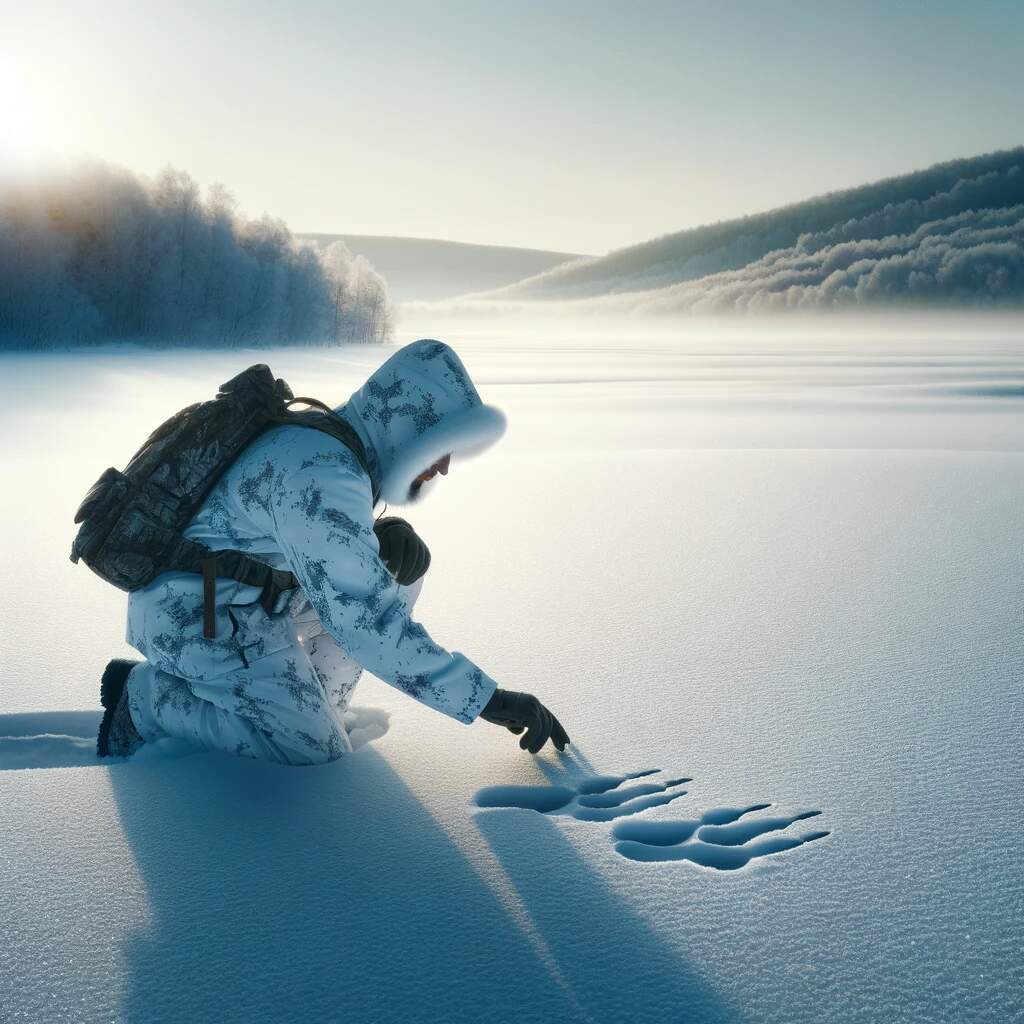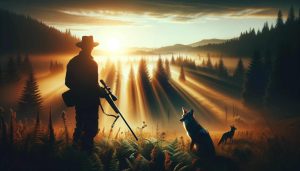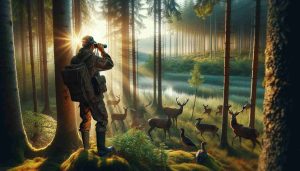Using snow to your advantage while hunting can significantly enhance your success and overall experience. This comprehensive guide will cover various aspects, such as tracking, camouflage, understanding animal behavior in snowy conditions, and safety tips. Here’s how you can leverage snow for more effective hunting.
Understanding Snow and Animal Behavior
Animal Tracks and Signs: Snow acts as a canvas, revealing the presence and patterns of wildlife. Learn to identify different tracks and signs. Deer, elk, rabbits, and other game leave distinct footprints and trails. Observing the size, depth, and direction of tracks can indicate the size of the animal, its speed, and where it’s heading.
Movement Patterns: Cold weather and snow cover affect how animals move and feed. They may conserve energy and limit movement, seeking sheltered areas or south-facing slopes to stay warm and find food. Understanding these patterns helps predict where to find them.
Using Snow for Camouflage and Concealment
White Camouflage: Use the snowy environment to blend in. White or snow-patterned clothing and gear can make you less visible to your prey. Cover any exposed skin and ensure your gear doesn’t contrast sharply with the snowy background.
Snow Shelters and Blinds: Snow can be used to build shelters or blinds, creating a concealed spot for you to wait for game. A well-constructed snow blind not only hides you but also provides some protection against the elements.
Tracking and Stalking in Snow
Silent Movement: Snow can dampen sounds, allowing for quieter movement. However, certain types of snow can be noisy and crunchy. Understand different snow conditions and how to move silently. Fresh, powdery snow is often quieter than wet, compacted snow.
Visual Tracking: In addition to tracks, look for other signs like disturbed vegetation, bedding areas, and droppings. These clues can lead you to your target or indicate recent activity.
Hunting Strategies Specific to Snowy Conditions
Ambush Techniques: Use snowbanks and drifts as natural cover for ambush hunting. Position yourself downwind and where you expect the animals to pass.
Still Hunting: Move slowly and methodically through the landscape, stopping frequently to watch and listen. Snow allows you to detect movement more easily against the stark white background.
Driving Game: In deep snow, game might be more reluctant to move. Working with a group, you can drive deer or other animals toward hunters positioned ahead.
Safety and Survival in the Snow
Hypothermia and Frostbite Prevention: Dress in layers to manage sweat and insulation. Keep extremities covered and dry. Understand the signs of frostbite and hypothermia.
Navigation: Snow can obscure landmarks and trails. Use a GPS device, map, and compass to navigate. Be aware of the weather forecast and any changes while you’re out.
Emergency Preparedness: Carry a survival kit with essentials like a first aid kit, fire-starting materials, extra food, and water. Know basic survival techniques in case you get stranded.
Ethical Considerations and Conservation
Respect for Wildlife: Understand the additional stress that winter and snow can put on wildlife. Avoid pushing animals too hard, leading them into dangerous terrain or exhausting them.
Legal and Ethical Hunting: Follow all local hunting regulations and ethical guidelines. Ensure you have the correct permits and understand the rules specific to the area and game you’re hunting.
Conclusion
Using snow to your advantage while hunting involves a combination of skills, knowledge, and preparation. By understanding animal behavior in snow, utilizing camouflage, mastering tracking and stalking techniques, and prioritizing safety, you can enhance your hunting experience. Remember to respect the wildlife and the environment, ensuring sustainable and ethical hunting practices.
By embracing the challenges and opportunities that snow presents, hunters can find greater success and enjoyment in their winter hunting expeditions. Whether you’re tracking a solitary deer or setting up an ambush for a group of elk, the snow can be your ally if you know how to use it effectively.










